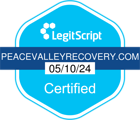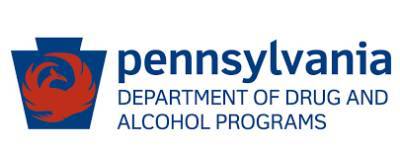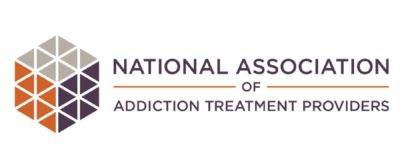National Recovery Month: Celebrating Connections
![]() | 4.9 Google Reviews
| 4.9 Google Reviews
![]() | 4.9 Google Reviews
| 4.9 Google Reviews
Peace Valley Recovery is located in Bucks County, Pennsylvania. Our mission is to provide patient-centered care that focuses on healing and recovery from addiction. This blog provides information, news, and uplifting content to help people in their recovery journey.
It takes ongoing commitment and dedication to stay alcohol- and drug-free. Even under normal circumstances, it’s not easy. Celebrating the work it takes to stay in recovery during this year is important. Anyone trying to stay clean and sober right now understands.
What is National Recovery Month?
National Recovery Month is celebrated every September. It focuses on educating people about the importance of treatment services. Substance use and mental health treatment is a vital part of finding recovery. It gives people the tools they need to rebuild a healthy and rewarding life.
Substance Abuse and Mental Health Services Administration (SAMHSA) created the National Recovery Month to bring these issues to the public’s attention. They also shared success stories to show that living in recovery is possible. National Recovery Month works to raise public awareness and inspire those still struggling.
Recovery is possible and National Recovery Month exists to show that.
“We found massive levels of variation in… patients who are prescribed opioids… We’ve also seen that the average number of pills prescribed was extremely high for outpatient procedures of this type, particularly for patients who had not been taking opioids prior to surgery.” – Dr. M. Kit Delgado, epidemiologist and researcher, Perelman School of Medicine University of Pennsylvania, Philadelphia, PA
These excessive, high-dose opioid prescriptions were written for patients who had just undergone a simple, often non-invasive procedure – arthroscopic knee surgery, one of the three most common outpatient procedures in the U.S.
Penn Study in Detail: Opioid Doses
= 50 Milligrams of Morphine Daily
The objective of the study researched by Perelman School of Medicine at the University of Pennsylvania, Philadelphia, PA, was to analyse state-level variations in opioid prescriptions written for so-called “opioid-naïve” patients after common knee arthroscopy procedures.
It had previously been established that the majority of patients prescribed opioids after minor surgery had tablets leftover, as these patients reported using less than 10 tablets during their recovery. It was hoped that the study would be highly useful in efforts to reduce the overprescribing of opioids by better understanding any variations, including the dose that patients had been prescribed.
The study, published in the British Medical Journal this year and using data from 2015-19, found that prescription levels varied widely depending on the state in which the individual received the outpatient arthroscopy procedure. For example, only 40% of patients in South Dakota were given opioids, but 85% received them in Nebraska. Additionally, patients were prescribed 24 tablets in Vermont, compared to 45 tablets in Oklahoma.
However, it was the actual strength of the opioid prescriptions that triggered alarm among the study’s researchers. The average prescription was high – 250 milligrams of morphine over a five-day period, equal to 50 mgs per day. This equates to the threshold set by the CDC as a significant marker for increased risk of opioid overdose death, yet it was prescribed to approximately 36% of the patients studied.

Opioid-Related Addiction
& Fatal Overdoses
The opioid crisis first came to widespread attention in 2015 when something dramatic happened – for the first time in almost a century, life expectancy in the U.S. dropped, and then entered a period of decline.
According to the data collected by the World Bank Group, the nation’s average life expectancy fell from 78.8 years in 2014 to 78.7 years in 2015. It then went on to drop down to 78.5 years in both 2016 and 2017. It’s dramatic because, in high-income countries like the U.S., life expectancy has been increasing steadily for decades. In fact, the last time that U.S. life expectancy declined in a similar way, it was because of military deaths in the First World War and the 1918 influenza pandemic, way back in 1915-18.
And the cause of this recent decline? Opioid prescriptions, written out by doctors who were handing out a drug that had been extensively misbranded, and then criminally marketed by pharmaceutical companies for over a 20-year period. This dangerous plethora of legal opioids resulted in widespread addiction, followed by a serious surge in rates of addiction, then fatal overdoses and suicides, both of which were directly linked to the use of opioid drugs.

The fatality rate from drug overdoses more than tripled between 1999 and 2017; those from opioid overdoses increased by almost a staggering 600% during the same period. More U.S. citizens died from opioid overdoses in 2017 than from either HIV- or AIDS-related illnesses at the very peak of the AIDS epidemic.
At the end of 2016, CDC Director, Dr. Thomas Frieden, wrote “America is awash in opioids; urgent action is critical.” On October 26, 2017, the U.S. government formally (and finally) declared the national crisis as an “Opioid Epidemic.”Now, in the midst of both a global pandemic and a national opioid epidemic, and with fatal opioid-related overdoses once again rising, the University of Pennsylvania has published a study revealing that excessive, high-dose opioids had been prescribed freely during the period 2015-19 – the likelihood is that is still the case.
“The work that is enabled by this declaration is vital to saving the lives of so many Pennsylvanians, providing education and treatment, and advancing initiatives across the state to continue to battle this epidemic.” – Tom Wolf, Governor of Pennsylvania, 11th Renewal of Opioid Disaster Declaration (August 19, 2020)
The American Medical Association released a shocking report from its own findings during the first part of this year. Using data compiled from 40 U.S. states through the U.S. Overdose Detection Mapping Application Program (ODMAP), which collects real-time overdose numbers, suspected drug overdoses across the nation have risen by almost a fifth (18%) from the middle of March when compared with data from before the coronavirus arrived here.
Fatal Drug Overdose Statistics
in the U.S. / Pennsylvania, 2020
In the U.S., suspected fatal drug overdoses have spiked by 18% this year during the months of March to July. Additionally, in a CDC survey of U.S. adults, 13% of respondents in June reported they had either started or increased their substance use to self-medicate from the effects of the coronavirus pandemic, such as increased stress or negative emotions, like depression.
One particularly shocking revelation has been in Milwaukee County, Wisconsin, where 911 calls for overdoses increased by more than 50% in March and April compared to the same period last year.

Here in Pennsylvania, the picture appears to be less dramatic, but equally concerning.
In western Pennsylvania, overdoses and overdose deaths are now happening at a rate not witnessed since the height of the opioid epidemic in 2017. The state’s doctors, law enforcement and drug and alcohol experts are all reaching the same conclusion: Covid-19’s seriously negative effect on addiction treatment.
In Beaver County, PA., for example, the effect has been devastating – fatal overdoses are up a frightening 30% from the first 3 months of the year. As of June 3, it’s a similar story in Cumberland County, where the unemployment rate went from 4% in March to more than 12% in April. More than 30 people have died this year from a drug overdose, and the county is sadly now well on its way to eclipsing the peak of opioid deaths in 2017.
How Peace Valley Recovery Can Help
Peace Valley Recovery, located in the rural city of Doylestown, PA., and easily accessible from Philadelphia, New York, Trenton, Newark, Jersey City, and beyond, provides excellent and empowering drug and alcohol addiction treatment, providing real patient-centered care that focuses on true healing and successful recovery.
At Peace Valley Recovery, you’ll find a wide range of the best treatment programs to help you step out of the cycle of addiction, and develop the right skills and mindset to remain on the road to recovery. From traditional individual therapy and life skills development to holistic therapies, such as music and art, our addiction treatment program in Pennsylvania is designed to support individual growth and healing.
Additionally, abstinence-based models, such as those used in 12-Step programs like AA and NA, can be foundational elements of your recovery. By starting a 12-Step program with us, you will be far better prepared when leaving the treatment phase of your recovery.
Our highly successful program has helped many achieve sobriety, and, more importantly, go on to maintain it.
Sources:
- Substance Abuse and Mental Health Services Administration: https://www.recoverymonth.gov/#intergrating-mat-and-recovery
- BMJ Open: https://bmjopen.bmj.com/content/bmjopen/10/8/e035126.full.pdf
- Overdose Detection Mapping Application Program: http://www.odmap.org/Content/docs/training/general-info/ODMAP-Fact-Sheet.pdf
- American Medical Association: https://www.ama-assn.org/system/files/issue-brief-increases-in-opioid-related-overdose.pdf
You May Also Like to Read
Holistic Approaches to Addiction Recovery
Holistic Approaches to Addiction Recovery in Pennsylvania Authored by Chris Schumacher, | Medically Reviewed by Peace Valley [...]
Navigating the Holidays in Recovery
Navigating the Holidays in Recovery Authored by Chris Schumacher, | Medically Reviewed by Peace Valley Recovery Editorial [...]
Legal and Social Issues in Recovery
Legal and Social Issues in Recovery Authored by Chris Schumacher, | Medically Reviewed by Peace Valley [...]








